Being Safe and Feeling Safe In Schools
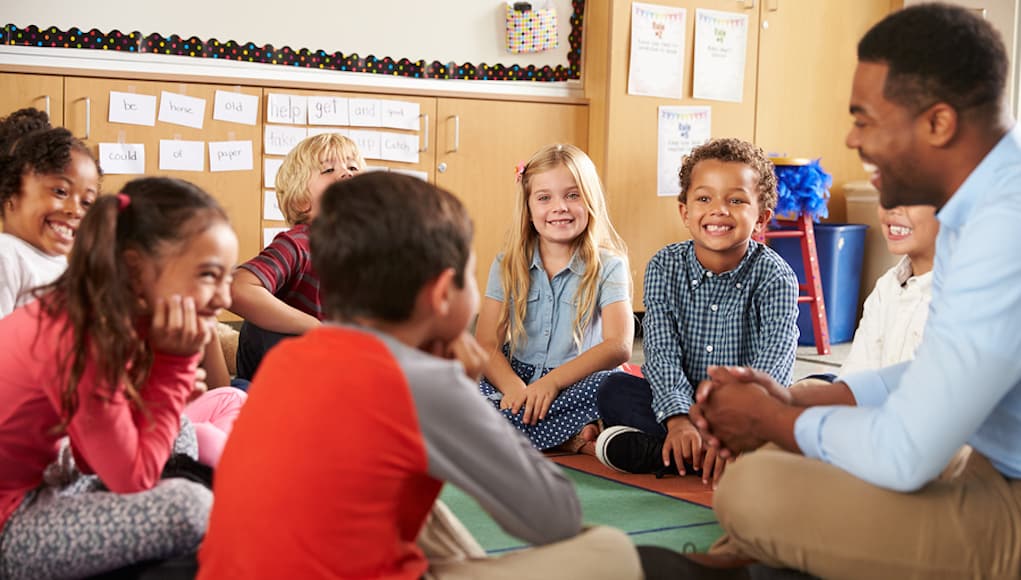
By: Jeff Rose.
The status of public education is similar to how my pastor once described our beloved church, “a perfect mess.” All people are flawed and complex, and education entails older people attempting to teach and raise younger ones. As a career-long educator, I appreciate the beauty of all that we do to impact the trajectory of the lives we touch. Simultaneously, I recognize the fact that our school systems undoubtedly need improvement, and I embrace the challenging road ahead. I have served as a classroom teacher, principal, and a three-time superintendent across both small/rural and large/urban environments. I have witnessed trends and acronyms come and go, federal regulations shift, and our pendulum of what we deem important swing back and forth.
Some describe education as a large ship, in that it can sometimes be difficult to turn. However, considering the US school system is comprised of approximately 98,300 public schools, and 13,600 school districts, it’s more comparable to an expansive fleet. In my time as an educator, I have observed and been involved with many successful, student-centered, efforts and initiatives: allocating resources aligned to a theory of equity, improving supports for second-language learners, integrating personalized learning models, incorporating technology into the student experience, diagnosing student needs with the use of improved assessment techniques, and creating content and courses that translate to future careers. We have a long way to go, but we are making great strides. And at this current juncture in time, I am pleased, yet still far from satisfied.
Our Building Fear
Unfortunately, there is one major priority in which conditions are steadily declining. . . the physical and social/emotional safety of students. Due to very real, disastrous, and highly-publicized mass shootings both inside schools and outside of them, our collective fear has never been as rampant as it is now. The shocking events we have witnessed in 2018 and 2019 have awoken an apprehension in all of us, as there were more school shooting incidents thus far than in any other two-year time period since 1970. In response, I have seen schools across the nation increase and upgrade their security measures and infrastructure like never before. I have personally commissioned professional safety audits in a number of school districts and have established safety task forces that have resulted in and achieved:
- Increased numbers of armed officers patrolling and stationed at schools.
- Added camera surveillance, some even including facial recognition capability.
- Revamped staff and student shooting protocol training.
- Guaranteed communication infrastructure for school police with local jurisdictions
- Ensuring the district has access to SWAT trained professionals.
- Encouraged students and families to report any safety concerns they may have (see something, say something movement) via a distributed app.
Despite such efforts and arguments that some of our schools may be “safer” than ever before, anxious parents and students continue to impede learning and trust. For students to thrive, they need to be safe and they need to feel safe. Serving as a superintendent throughout the years, I have been responsible for the safety and wellbeing of a total of 170 schools. Despite the mathematical odds, one of my worst fears was the potential of a mass shooting within my district.
Our Biggest Problem
While acts of violence dominate the headlines and news cycles, educators work with students on a daily basis to confront issues that are even more significant. The number one concern amongst educators is not the probability of a catastrophic event, but rather the social and emotional challenges that our youth are forced to navigate in today’s day and age. In our country, anxiety and depression have never been as high for students as they are now. Teachers and administrators witness and experience it every day. In fact, students themselves report that they see anxiety and depression as a major issue for themselves and their peers.
As one can imagine, the reasons why our youth struggle with these issues is neither simple nor clear. As a parent of two teenagers, I cannot honestly relate to many of the challenges that our kids face – most adults can’t. The world has changed, and it will continue to do so. As of now, there are multiple factors that contribute to the increasing burden that today’s kids carry:
- The impact of social media on peer pressure.
- Constant information and entertainment overload.
- Anxiety about performing and competing, both at school and at home.
- Increasing academic pressure and expectations.
- Family trauma.
- Poverty.
I have been fortunate enough to work in school districts where we established strategic plans that consisted of clear academic expectations, student interventions and support systems, and assessment protocols, opportunities for teacher collaboration, and a priority for quality family/community communication. As a result, I have been part of significant academic gains in every district that I have been fortunate to lead. However, two of the last three districts that I have worked in have followed the same unfortunate national trend in terms of students taking their own lives. Teen suicide rates in our county are at an all-time high, and I am not proud to admit that I have not been able to turn the tide for the schools that I have led, relative to student suicide and self-harm.
And despite how it may seem, school districts throughout the country are not simply sitting on their hands. Even amidst budget constraints, they are working to add more counselors and social workers to support students as best as they can. Social Emotional Learning (SEL) curriculum and instructional strategies are being pushed to schools and are often sought out by classroom teachers. However, we struggle with issues of capacity. How much more responsibility and burden can schools accept, and how fast can such changes in our system take place? We have ‘pockets of excellence’ in schools and a number of high-performing districts that serve as models for what is possible, but we have students with significant needs in every corner of every community. For the sake of our students, we need to leverage our sense of urgency and somehow do more and implement the right solutions and policies at a faster pace.
Space To Innovate
While there may be some very impressive and potentially innovative ideas and products available for schools to consider, districts are still establishing fundamental infrastructures that are needed and affordable. Even facial recognition cameras, while inventive and controversial, are being utilized as reactionary tools. Keep in mind, having camera systems may be a deterrent, but districts also need to have the resources and protocols in place to monitor and use the hardware and to their fullest potential. Innovations I envision having the biggest impacts in the near future may be in the following three areas:
- Social media monitoring. Five years ago, I remember discussing the idea of researching strategies for our district to gain insight into dangerous commentary and threats students sometimes make via social media channels. The concept was new territory for us, and quickly we shied away from it due to the controversy of it being considered by some as an invasion of privacy and free speech. Times have changed. School districts are currently turning to industry partners, Social Sentinel, for example, to help with the process of tracking keywords and language algorithms to flag public posts that may suggest violence or danger within the school community. The intent for districts is to use the information to proactively intervene. An Atlanta based company named Bark, not only supports school districts but also puts such a tool within the hands of parents to track their children and those they associate with.
- See something, say something. School administrators and resource officers have always known that the best source of information comes from our students. Most would be surprised at the number of incidents that are controlled because students reach out and tell a trusted adult in the school. It’s when they don’t, bad things happen. It’s becoming quite common for school districts to provide apps that allow students and the community at large to confidentially report an alarming safety concern. For such a process to be successful, districts must shift from the mentality that security is their responsibility to one that believes our students and community are partners and can help us if given the appropriate tools and access. I have come to believe that student voice and advocacy, specifically focused on the safe and secure environment they desire, is an underutilized resource. Fortunately, schools are progressing with instruments and expectations that can make a dramatic difference in the inclusive and safe environment our kids deserve.
- Social-emotional curriculum, models, and tools. Years ago, social-emotional curriculum and instructional strategies were considered an ‘add-on’ to the classroom environment, nice but not necessary. Fortunately, in many of our schools and districts, this is changing. With the help from various partners (i.e.- CASEL, Edutopia, research and a variety of for-profit companies), social-emotional standards and instructional strategies are becoming staples in the classroom and school environments. Schools, such as the Valor Academies in Tennessee, are utilizing a specific social-emotional model as the very foundation for which the school system is designed. Emerging companies such as Panorama Education are helping educators track and use research-based data to drive actionable instructional strategies tied to the social-emotional needs of students. The challenge will continue to be changing our teaching and learning expectations while simultaneously being careful of what we are adding the plate of educators. Therefore, innovative models, tools, and data sets are critical for schools to be able to successfully implement social-emotional supports for students.
Time To Circle-Up
I don’t have the silver-bullet solution to our growing student safety epidemic. However, I believe in the power of collaboration. When the right people are assembled under the right conditions, incredible things can happen. For years, I have worked to establish cohesive collaborative structures and environments for educators. I have witnessed teachers and leaders accomplish unbelievable feats just by tapping into the collective wisdom of their colleagues. When navigating complicated challenges, I trust in the process of knowledgeable and motivated professionals circling-up with any given problem in the middle of the table. Education is a team sport and leading alone is not effective.
As a superintendent, I poured every ounce of my being into serving my schools and communities. Yet, a little over seven months ago, I chose to resign from Fulton County Schools (96,000 students, 105 schools), and it was certainly the most difficult professional decision I have ever made. Fast forward to now . . . I have started an organization called Leading Ed Solutions, a national community of superintendents assembled to help and support one another with their solutions and strategies aligned to a common problem-of-practice. Our goal is to build a well-structured system to help our leaders, individually and collectively, take their school districts to the next level. For this year, as you might imagine, we are tackling student safety, both physical and social/emotional.
Our Why
Superintendents are in a very isolated position. The expectations of their role are often unrealistic, and the demands placed on them are becoming more and more challenging over time. Districts are grappling with immense problems, both on a local and national level. Meanwhile, the ‘conference model,’ along with more traditional methods of support are not adequately helping top leaders move from talk to action.
Imagine the things that we are going to learn over the next year by gathering together the talented leaders who are responsible for the infrastructure and direction of our schools. The ‘knowledge capital’ that we will soon capture will add a critical layer of pragmatic information to what is a burning priority throughout our country.
Every week, we have more superintendents express interest in and a commitment to Leading Ed Solutions. Quality leaders know that while it is important to be aware of research and ‘best practice’, the task of galvanizing others and orchestrating momentum and achieving results is an art form.
For more, see:
- Can Learning Be Both Powerful and Boring?
- 4 Ways Project-Based Learning Prepares Students for the Future of Work
- Podcast: Susan Patrick on Transforming Education Systems for Equitable High-Quality Learning
Stay in-the-know with innovations in learning by signing up for the weekly Smart Update.
Jeff Rose is the Founder of Leading Ed Solutions and has his own podcast, Leading Education with Jeff Rose. You can find him on Twitter at @DrJeffRose.


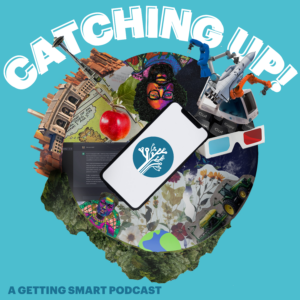

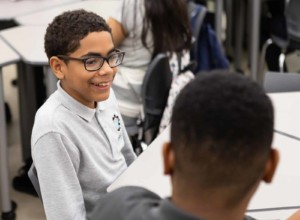
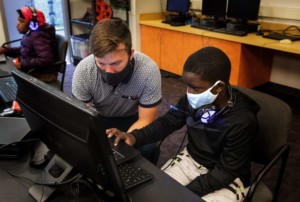
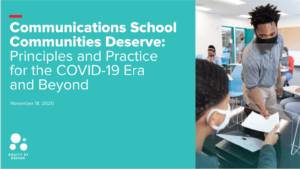
Logan Bell
Students need to be able to feel safe in school and video surveillance is an important part of this. It can be deployed in an unobtrusive way alongside other safety and security measures.